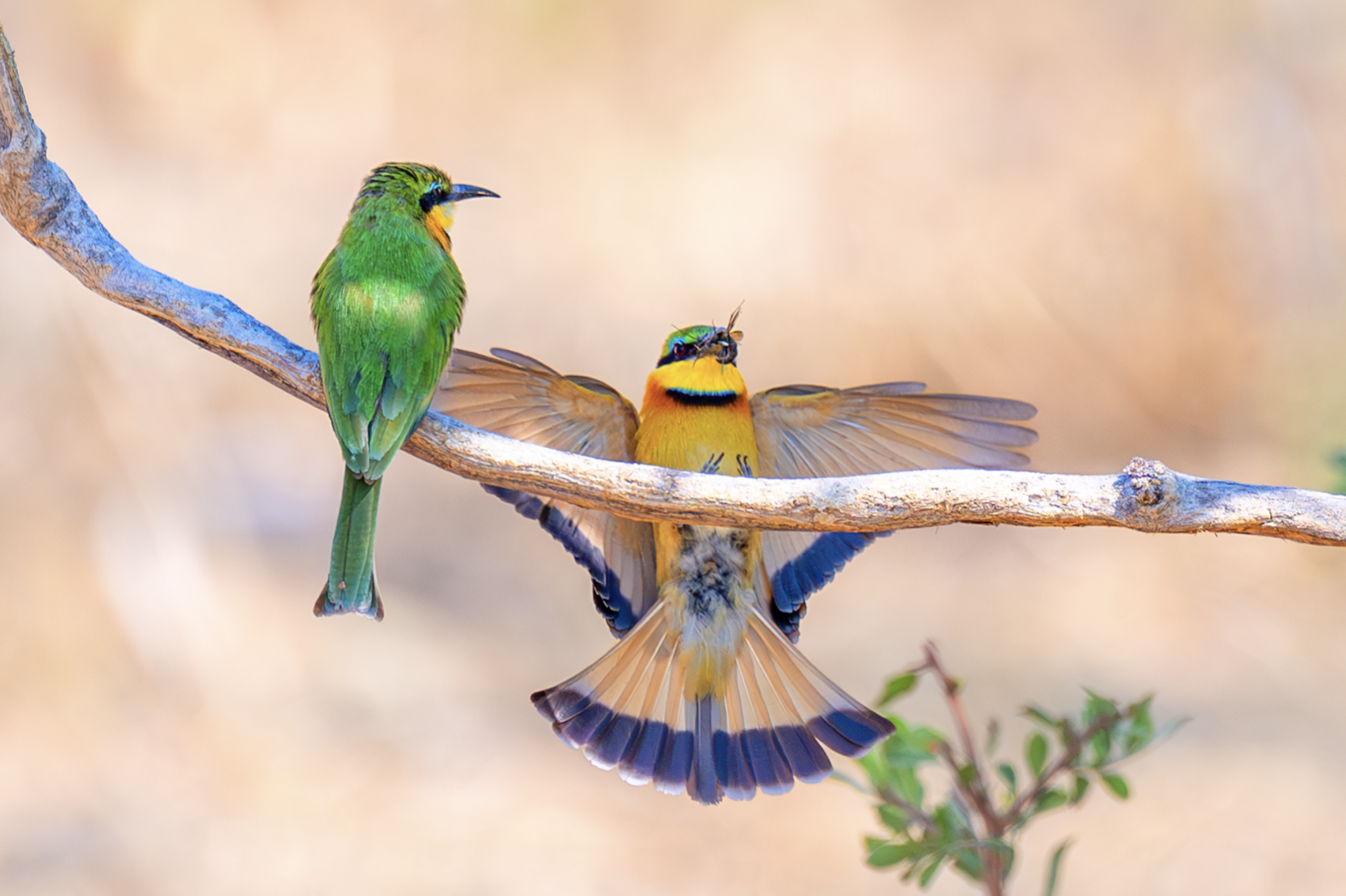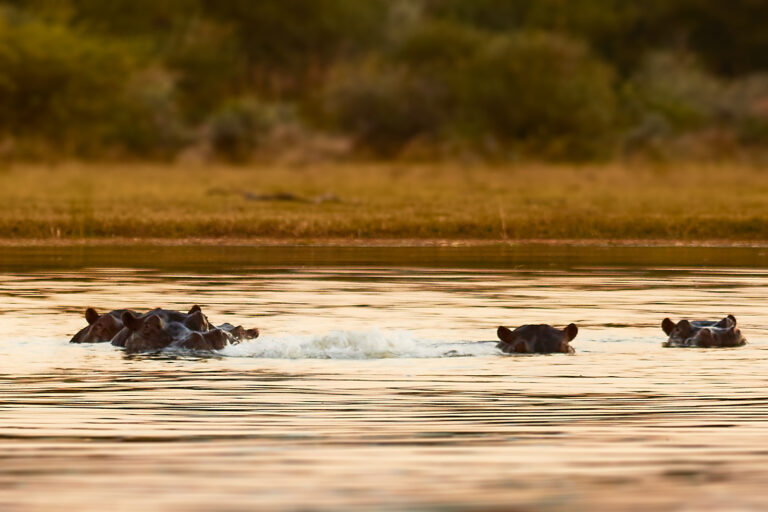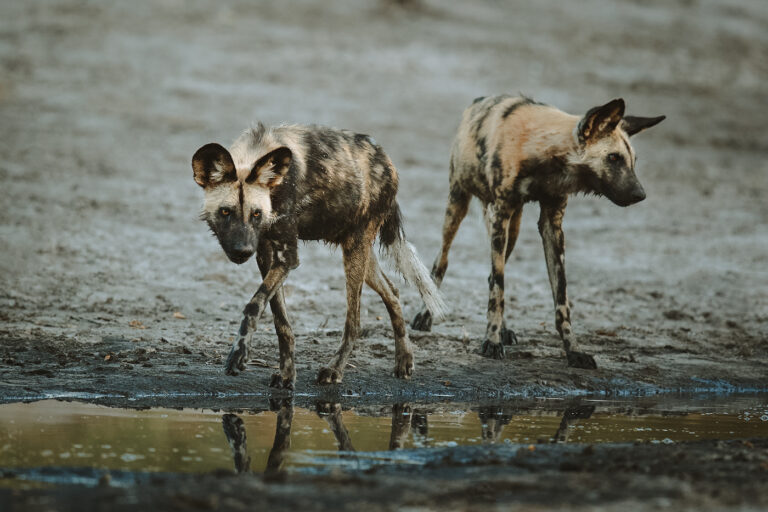Chobe National Park, located in the heart of Botswana’s Chobe region, is a sanctuary for wildlife enthusiasts and birdwatchers alike. Renowned for its diverse habitats ranging from expansive floodplains to dense woodlands and the life-giving chobe river, the park is home to an extraordinary variety of birds in chobe national park.
Visitors on a trip here can expect to encounter magnificent birds, from striking black raptors soaring overhead to colorful social birds flitting among the trees. Whether you are here during the green season or the dry months, the park’s water levels and abundant wildlife, including hippos, elephants, buffalo, and crocodiles, create a vibrant ecosystem that supports an impressive avian population.
In this article, we present the top 10 most stunning bird species you can photograph and admire, guided by knowledgeable guides who will help you uncover the secrets of these remarkable creatures and their habitats along the water’s surface and beyond.
Birdwatching in Chobe National Park
Chobe National Park is a world-renowned birding destination nestled in northern Botswana, boasting an incredible diversity of over 450 recorded bird species. From the haunting call of the African Fish Eagle to the rare sight of the African Skimmer in flight, the park offers one of the richest birdwatching experiences in Africa.
Its variety of ecosystems, from lush floodplains and wetlands along the Chobe River to dry savannahs and dense woodlands, create ideal conditions for both resident and migratory birds. Whether you’re a seasoned ornithologist or a curious first-time birdwatcher, Chobe provides an awe-inspiring glimpse into the lives of some of Africa’s most magnificent avian species.
Boat cruises along the river and guided game drives offer unbeatable opportunities to observe these birds in their natural habitats. Moreover, Chobe’s strategic position at the intersection of four African countries adds an interesting element to avian migration patterns, further enriching the birdwatching experience.
Best Time to Visit Chobe National Park
Wet Season (November to April)
This is prime birdwatching season, especially for migratory species. The lush greenery and abundant water attract a multitude of birds, including breeding pairs. Birdsong fills the air, and many birds display vivid breeding plumage, making identification easier and more exciting.
Dry Season (May to October)
Easier visibility and excellent opportunities to see birds gathered around limited water sources. Species like the Yellow-billed Stork and Pied Kingfisher are more active. It’s also a great time to combine birdwatching with general wildlife viewing, as animals congregate near rivers and waterholes.
Birding is productive year-round, but your experience will vary depending on the season and what species you’re hoping to see.
Top 10 Stunning Birds to Spot in Chobe National Park
Birdwatching in Chobe National Park is an unforgettable experience, and the diversity of birds you’ll encounter is simply astounding. From riverside dwellers to ground roamers and vibrant woodland inhabitants, each bird species brings its own unique charm to the landscape. Here is a deeper dive into the top 10 most captivating birds to look out for during your safari. These descriptions offer not just identification tips, but insight into their behaviors, habitats, and ecological importance, helping birders of all levels to appreciate their presence more fully.
1. African Fish Eagle
The African Fish Eagle is a quintessential symbol of African wilderness. With its piercing call often described as the “voice of Africa,” this raptor commands attention even before it is seen. Typically perched high in trees overlooking rivers or lakes, it scans the waters with keen eyesight, ready to swoop down and snatch its prey with its powerful talons.
As a top predator in the aquatic ecosystem, its presence signifies a healthy environment. Revered for its strength and majesty, it is the national bird of several countries, including Zambia, Zimbabwe, and South Sudan.
2. African Skimmer
This rare and elegant bird is best known for its unusual feeding technique. The African Skimmer flies just inches above the water, its long lower mandible slicing through the surface to catch small fish. It is most active during the early mornings and late afternoons, particularly along calm stretches of the Chobe River.
Its black-and-white wings contrasted with an orange beak make it easy to spot once you know where to look. Because of their sensitivity to water quality and nesting disturbance, sightings of skimmers are a testament to Chobe’s intact riverine ecosystems.
3. Malachite Kingfisher
One of the most visually stunning small birds, the Malachite Kingfisher dazzles with its iridescent blue back and bright orange underparts. Usually spotted near reeds or overhanging vegetation by water, it darts swiftly to catch tiny fish, tadpoles, and aquatic insects.
Despite its delicate size, this bird is a bold and effective hunter. Often found alone or in pairs, it’s a favorite among photographers for its vibrant colors and reflective habitats. Their presence adds a touch of sparkle to the serene Chobe River scenery.
4. Southern Carmine Bee-eater
Few birds are as flamboyant as the Southern Carmine Bee-eater. Their vivid pink bodies and turquoise heads make them stand out in flight, often forming sweeping aerial formations over riverbanks.
These bee-eaters dig nesting tunnels into sandy banks, which you can often spot near the water’s edge during breeding season.
With a diet that includes bees, wasps, and other flying insects, they catch prey mid-air with exceptional agility. Their colonies can be bustling and noisy, offering spectacular scenes for any observer lucky enough to find them.
5. Yellow-billed Stork
This large wading bird stands out with its long yellow bill, which curves slightly downward, and its stately white plumage tinged with pink during breeding.
Often seen foraging in shallow wetlands, the Yellow-billed Stork methodically sweeps its partially open bill through the water to detect prey by touch.
It feeds on fish, frogs, and crustaceans, making it a key player in aquatic food webs. Social by nature, it often forages in groups and nests in colonies high in trees, alongside ibises and herons.
6. African Spoonbill
With its unmistakable spoon-shaped bill, this elegant white bird is a marvel to watch in action. It feeds by rhythmically sweeping its bill from side to side while wading in the shallows, catching small aquatic creatures. Spoonbills prefer open, shallow wetlands and are often seen feeding alongside storks and herons.
Their long legs and graceful stride allow them to navigate reed beds with ease. During breeding, they develop a blush of pink across their feathers, adding to their appeal for birdwatchers.
7. Pied Kingfisher
Dressed in a sharp black-and-white plumage, the Pied Kingfisher is as striking in appearance as it is in flight. It is unique among kingfishers for its ability to hover over water while scanning for prey.
Once a target is identified, it plunges headfirst to snatch fish with incredible precision. Common along the Chobe River, this species is often seen in pairs or small groups. Its vocal, chattering call often alerts birders before it comes into view.
8. Kori Bustard
Majestic and slow-moving, the Kori Bustard is the heaviest flying bird in Africa and a true spectacle of the savannah. Males can weigh up to 20 kg and are known for their dramatic courtship displays, inflating their necks and emitting booming calls to attract females. They feed on a wide diet, including insects, small reptiles, and seeds.
Their cryptic plumage blends perfectly with dry grasslands, so spotting one feels like a rewarding achievement. A sighting of this bird is a true prize for any safari-goer.
9. African Pygmy Goose
This tiny and colorful waterfowl is a gem of Botswana’s wetland habitats. The African Pygmy Goose sports a shimmering green back, white face, and chestnut flanks. It prefers quiet, vegetated water bodies where it forages on seeds, water lilies, and small invertebrates.
Unlike most geese, it is more solitary and elusive, often spotted alone or in pairs among floating vegetation. Their diminutive size and radiant colors make them a favorite among birdwatchers with a keen eye.
10. Southern Ground Hornbill
One of Africa’s most distinctive terrestrial birds, the Southern Ground Hornbill, commands attention with its large size, deep red facial skin, and solemn expression. It spends much of its time walking across open grasslands in small family groups, foraging for insects, snakes, and small mammals.
Their resonant calls can be heard at great distances, often likened to distant drums. With a long lifespan and a slow reproductive cycle, they are particularly vulnerable to habitat loss, making every sighting all the more significant and precious.
Bonus: Khwai Village and Surroundings
While not technically within Chobe, a visit to Khwai Village on your broader safari journey complements your birding experience with sightings of rare woodland and riverine birds, including the elusive Pel’s Fishing Owl—a bucket-list species for many birders due to its nocturnal habits and rarity.
Waterbird Species
The Chobe River and surrounding floodplains are teeming with aquatic birdlife. Species like the African Darter, Black-crowned Night Heron, and White-faced Whistling Duck are frequently spotted. The serene, glassy waters of the river provide a perfect mirror for observing these birds in action.
Other Notable Waterbirds
- Great Egret – graceful and stately, often found stalking fish in shallow water.
- White-backed Night Heron – a rare and secretive species.
- Openbill Stork – easily identified by its gap in the bill used to crack mollusks.
Inland Bird Species
Beyond the river, Chobe’s woodland and savannah landscapes host a vibrant mix of inland birds. The Groundscraper Thrush, Blue Waxbill, and Red-billed Oxpecker are common, while the rare Arnot’s Chat and Schalow’s Turaco delight those lucky enough to find them.
Keep an Eye Out For
- Brown Firefinch – a charming little finch often spotted in undergrowth.
- Lilac-breasted Roller – a national bird of Botswana, famous for its stunning colors.
- Bateleur Eagle – a striking raptor known for its aerial agility and short tail.
Conservation Efforts
Chobe National Park plays a pivotal role in avian conservation in Southern Africa. Through anti-poaching patrols, habitat restoration, and community engagement, the park ensures that bird populations remain healthy. Guides and rangers are trained in bird identification and behavior, enhancing both conservation outcomes and tourist experiences.
In addition to formal conservation efforts, bird monitoring and data collection contribute to regional and global ornithological databases. Partnerships with international birding organizations help raise awareness about endangered species like the Southern Ground Hornbill.
Planning Your Birdwatching Safari
Guided Tours
Many lodges and safari operators offer birding-specific tours led by expert guides who know the best spots for elusive species.
Accommodation
From luxury riverfront lodges to more rustic mobile safaris, you’ll find options that cater to both comfort and immersion in nature.
Travel Tips
Pack binoculars with good magnification, a bird guidebook specific to southern Africa, a camera with a zoom lens, sunscreen, and a hat. Lightweight clothing in neutral colors is ideal.
Local Knowledge
Engage local guides who possess deep insights and can help you find lesser-known hotspots.
Birding Checklists
Download or print a Chobe bird checklist to track your sightings and enhance your learning.
Ready to Take Flight?
Pack your binoculars and get ready for a symphony of bird calls in one of Africa’s greatest wildlife destinations. Whether you’re drifting along the riverbanks or scanning the treetops, Chobe is sure to leave you spellbound by its feathered residents.
Let your next safari be a journey through color, song, and the untamed spirit of Botswana’s wild skies.



